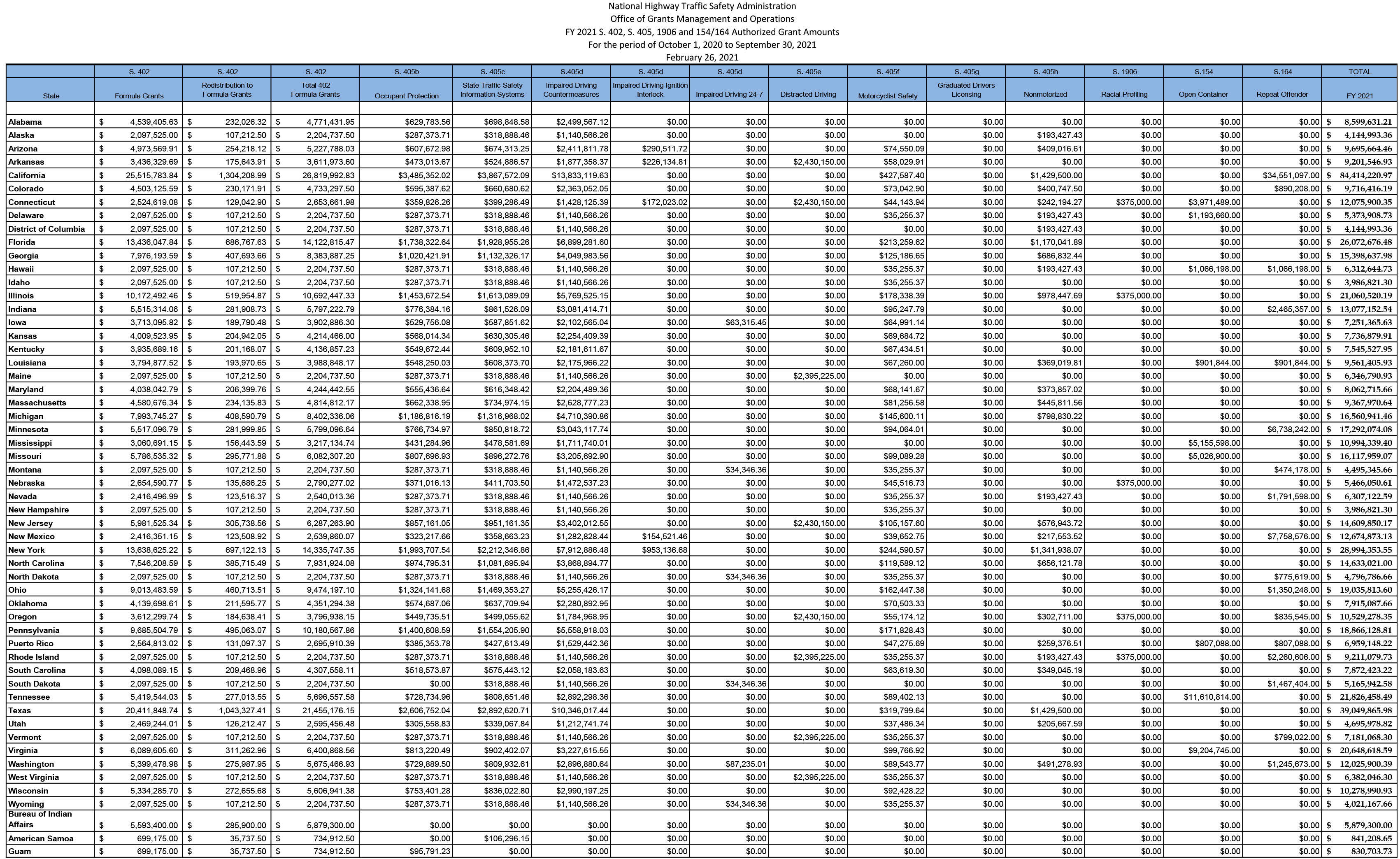State Highway Safety Offices (SHSOs) administer a variety of grant programs that are authorized and funded through federal legislation.
Highway Safety Programs
The Highway Safety Act of 1966 authorized the first federal highway safety program — the State and Community Highway Safety Grant Program (or Section 402). Since then, Congress has revised national highway safety grant programs many times through reauthorizing legislation, creating new incentive grants, penalties and sanctions.
Section 402: State and Community Highway Safety Grant Program
This program provides grants to states to improve driver behavior and reduce deaths and injuries from motor vehicle-related crashes.
Section 154: Open Container Provision
This provision encourages states to enact an open container law.
Section 164: Repeat Offender Provision
This provision encourages states to enact a repeat offender law.
Section 1906: Racial Profiling Prohibition Grants
This program provides grants to encourage states to maintain and allow public inspection of statistical information on the race and ethnicity of the driver for all motor vehicle stops made on all public roads except local or minor rural roads, as well as training and education to reduce the disparate impact of traffic stops.
Section 405: National Priority Safety Program
This page includes subsections for the following:
- Impaired Driving
- Occupant Protection
- Traffic Records
- Motorcyclist Safety
- Distracted Driving
- Graduated Driver Licensing
- Nonmotorized Safety
- Preventing Roadside Crashes
- Driver and Officer Safety Education


